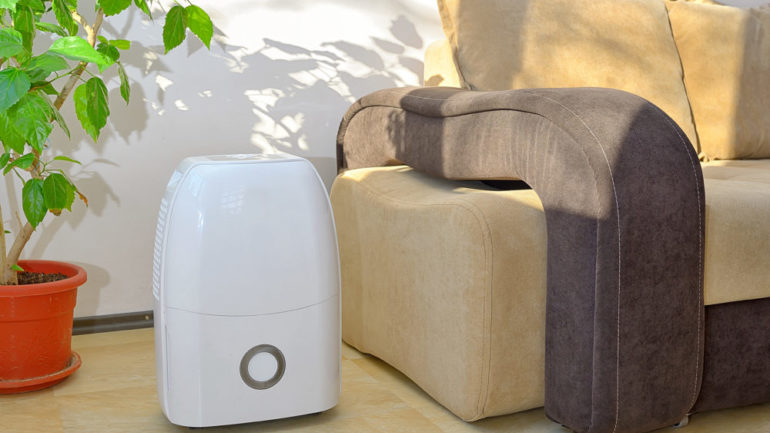High humidity in a home is uncomfortable and can pose health risks. Would using a dehumidifier in your house make sense? Let’s wring out the facts.
Reasons to use a dehumidifier
Besides being uncomfortable, high humidity fosters the growth of mold, bacteria and dust mites. A dehumidifier reduces the air’s moisture content, helping prevent these problems. Dehumidifiers also help your air-conditioner operate more efficiently, as dryer air cools more easily.
Some rooms of the house are more prone toward higher moisture. Bathrooms are an obvious example, but so are kitchens, basements or crawl spaces that aren’t well-ventilated. Signs of a humidity problem include moisture beading on walls or on window glass and sills. Mold in these areas also indicates there is too much moisture in your home’s air.
Related – Stopping Mold In Its Tracks
Reasons not to have a dehumidifier
Your home’s air-conditioner is actually a dehumidifying system, extracting moisture as it cools your house. Newer systems with smart thermostats detect not just temperature but also your home’s moisture level, and prompt the air-conditioning system to reach the selected temperature and achieve proper humidity.
HVAC professionals advocate that you attain optimum air conditioning function before resorting to a home dehumidifier. Installing ventilation fans in rooms prone to high humidity also can help dehumidify your home by venting humid air outside.
Dehumidifiers are most needed from May through September and least in the winter months, when the air outside is dryer. Dehumidifiers use a fairly high amount of electricity. If you decide to buy one, look for the blue Energy Star rating, which assures you your unit meets high energy-efficiency standards.
Two types of dehumidifiers
If you decide you need a dehumidifier, you can choose between a portable dehumidifier that treats one room or a whole-house dehumidifying system. A portable dehumidifier is about three feet high and can be moved from room to room as needed. Typical units can extract up to 70 pints of moisture a day from the air. With a portable, you must empty the unit’s reservoir tank, which collects the water, two or three times a day. Or your HVAC professional can connect the machine to a drain, eliminating the need for emptying.
A portable dehumidifier may be the best choice in a smaller home, or one where humidity problems are isolated to one or two rooms. The downside to a portable is that is visible in the room, takes up space and makes noise. Portable dehumidifiers start at around $180.
A whole-house dehumidifier treats every room and requires professional installation because it connects to your home’s HVAC system. Whole-house systems are quieter than portables, more energy efficient and out of sight. Your initial investment will be higher, however, with the purchase price plus installation beginning at nearly $1,700.


